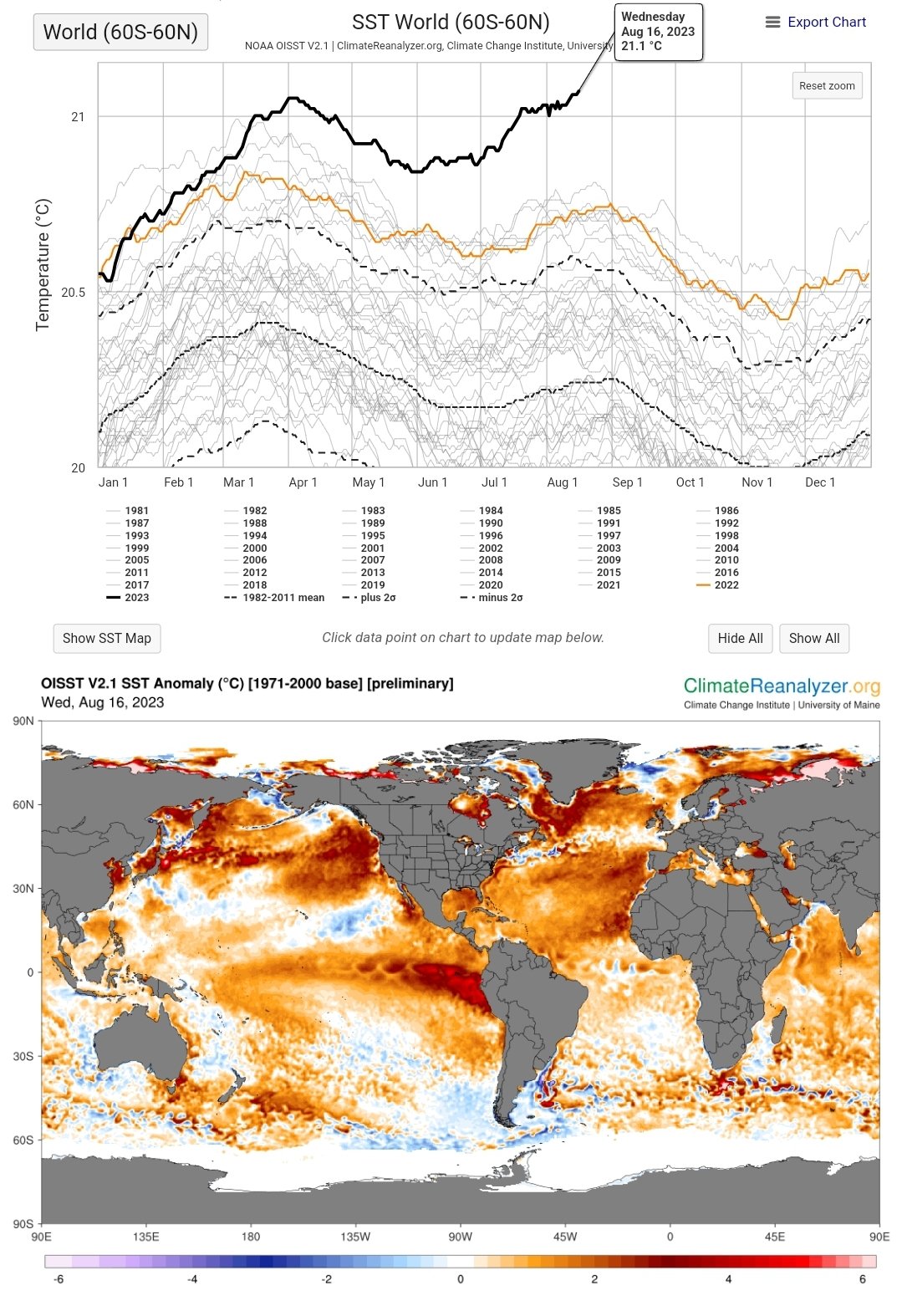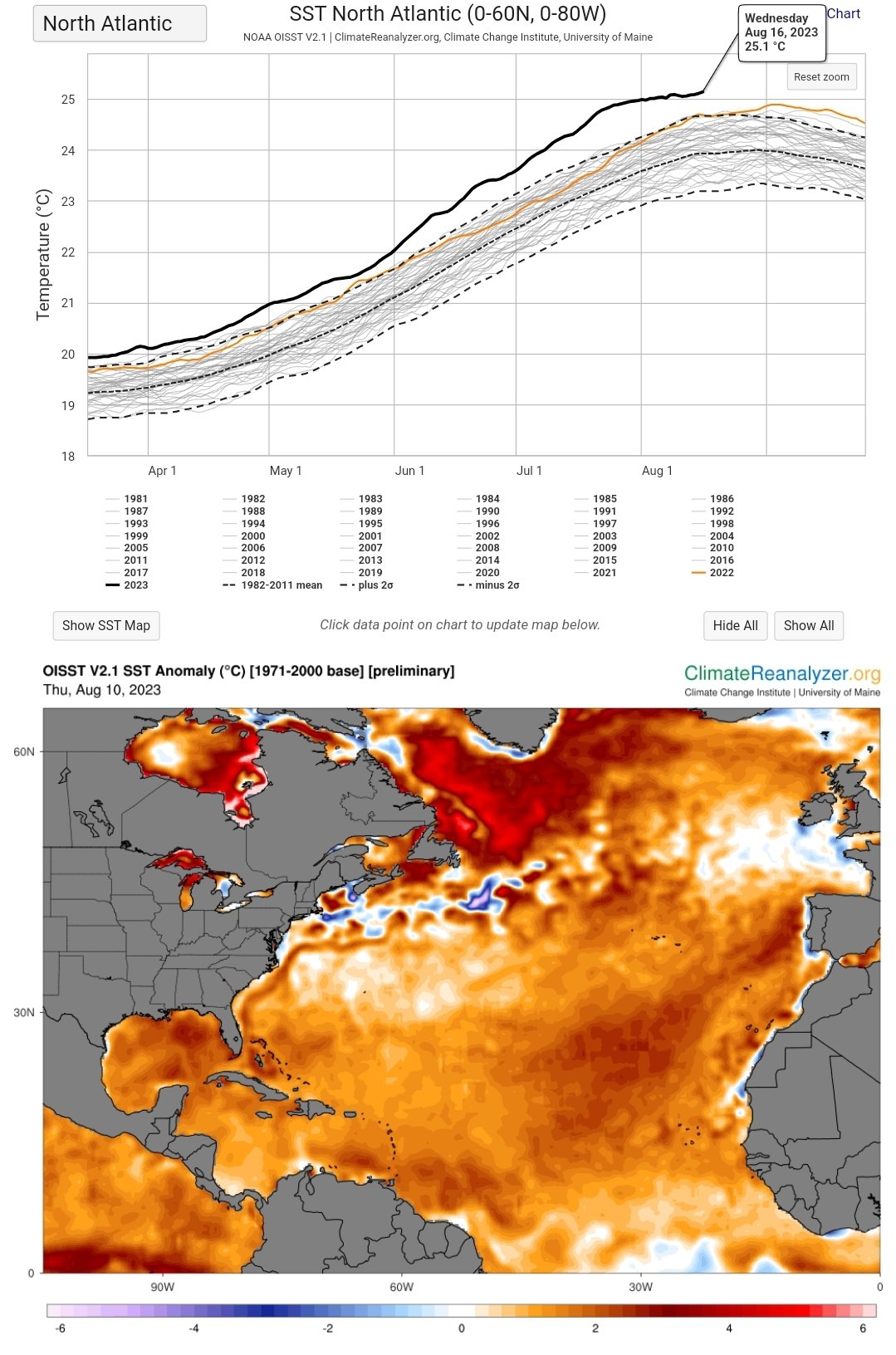Earth Viability Dashboard
|
|
Earth's DashboardHumanity's Ecological FootprintEarth Overshoot Day in 2023 was August 2, 2023! 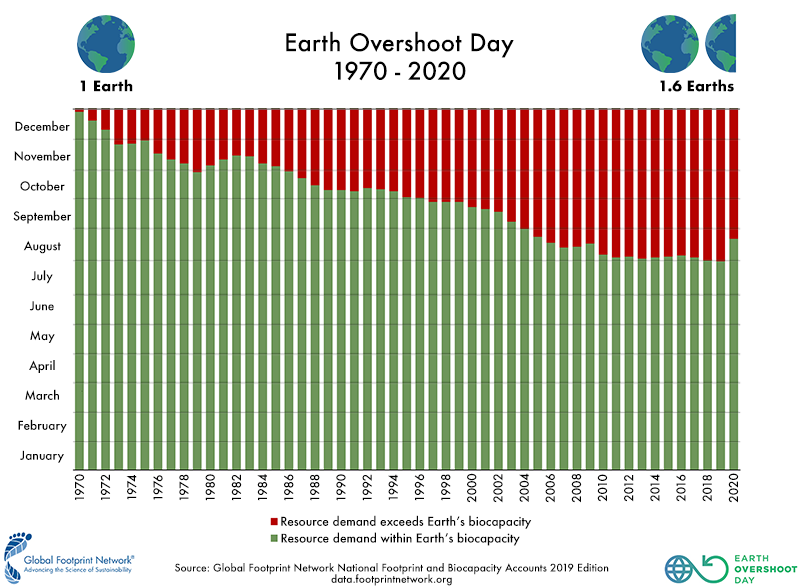 Earth Overshoot Day: The day in the year when humanity has used all the resources the planet produces in one year and starts tapping into the stock of nature is coming earlier every year. From Earth Overshoot Days. 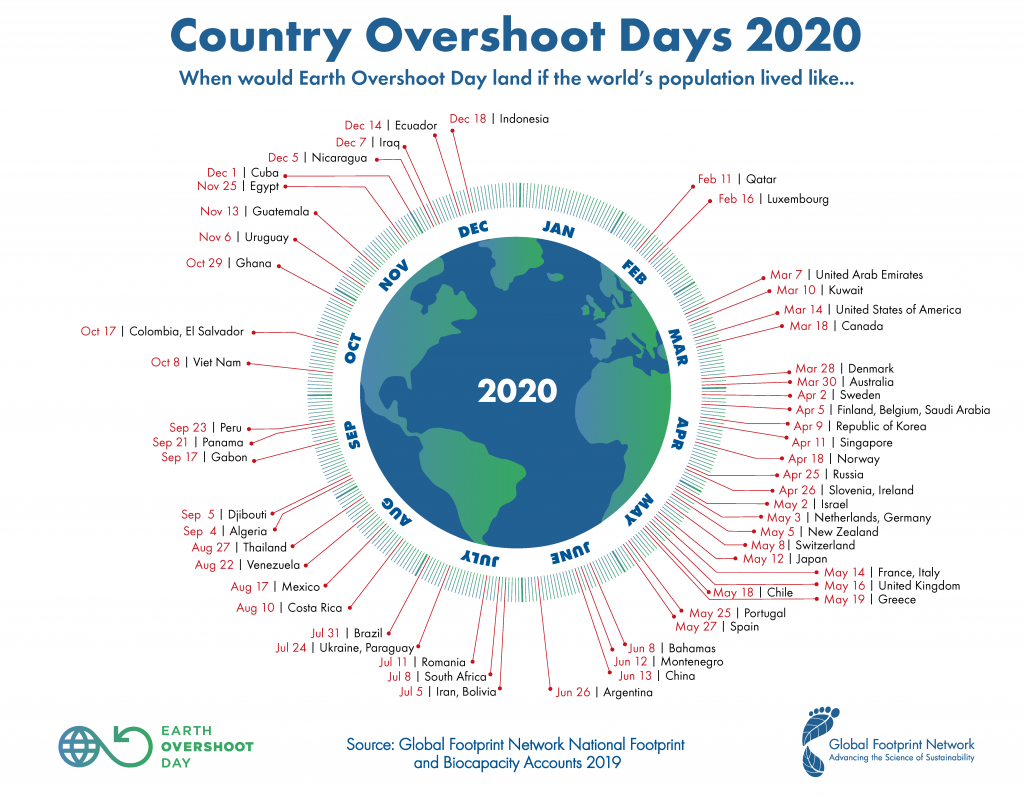 Overhoot Day by Country: The overuse of natural resources is distributed very unequally between countries. From Earth Overshoot Day. For more information on humanity's ecological footprint, see https://www.overshootday.org/ ... The Earth Energy Imbalance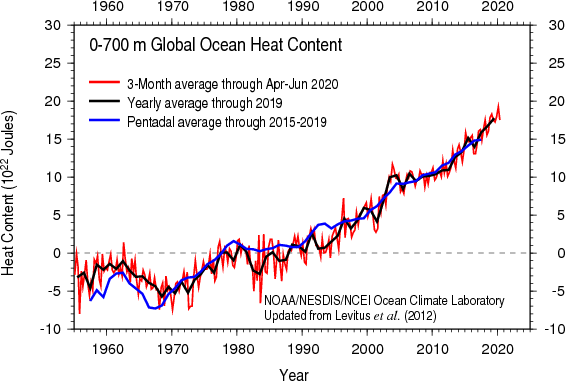 The ocean heat content is rapidly increasing. This is the result of the Earth Energy Imbalance (EEI) being today roughly 10 million times larger than on the long-term average over the last 200 million years. This very large EEI is caused by the high CO2 content in the atmosphere caused by humanity's excessive use of fossil fuels. More than 90% of the energy the planet currently stores goes into the ocean. For more information, see NOAA web page ... 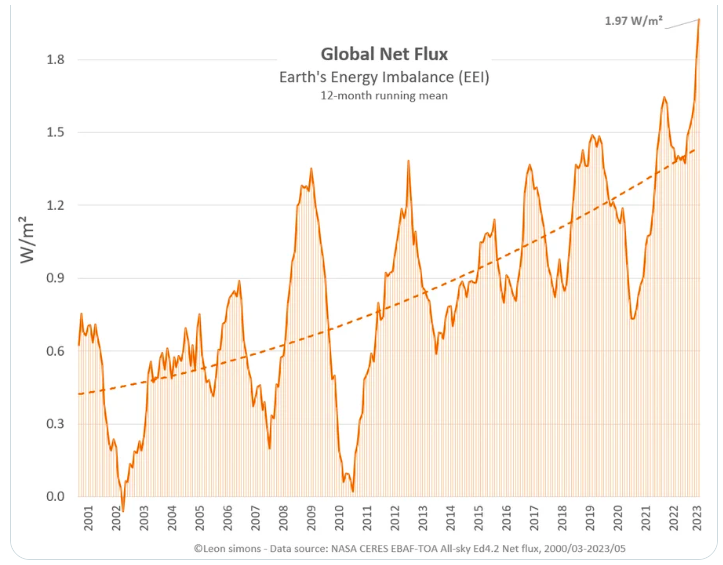 The Earth Energy Imbalance (EEI) went from roughly 250 TW in 2000 to 720 TW in 2023. It doubled in roughly 13 years (from 2007 to 2020). That is most likely the most important aspect of the Climate Emergency: the planetary heating is rapidly increasing! A doubling time of 13 years for EEI means that the increase in heating is now decoupled from the increase in excess #greenhouse gases. Most likely, the change in surface albedo (potentially caused by the rapid loss of sea ice) allows for more heat storage particularly in the ocean. As a consequence, global warming is accelerating. A key question with a potentially devastating answer is: "Has the climate entered a runaway phase?" If so, there is no climate action left that could change this. Understanding that the Climate Crisis is at the core of the Planetary Emergency, a runaway climate would be devastating for the Earth's ability to support life at its current diversity on the planet. The diagram was prepared by Leon Simons, who tweeted the diagram on July 28, 2023, see https://twitter.com/LeonSimons8/status/1684966795826929666. The diagram uses NASA CERES EBAF-TOA All-sky Ed4.2 Net Flux data from March 2000 to May 2023. Copernicus Climate Change ServiceThe Climate Change Service implemented by ECMWF as part of The Copernicus Programme reports on the global temperature. In the Monthly Climate Bulletin published on June 6, 2024, it is stated that May 2024 marks 12 months of record-breaking global temperatures. The map below shows the temperature anomaly of the last 12 months compared to the 1991-2020 average. The conclusion in the Bulletin is that there is reason to be worried about climate change. 
Anomalies and extremes in surface air temperature for the 12-month period from June 2023 to May 2024. Colour categories refer to the percentiles of the temperature distributions for the 1991–2020 reference period. The extreme (“Coolest” and “Warmest”) categories are based on rankings for the period 1979–2024. Percentiles and rankings are relative to all 12-month averages between January 1979 and May 2024. Data source: ERA5. Credit: Copernicus Climate Change Service/ECMWF. NOAA's Global Climate DashboardNOAA has a Global Climate Dashboard that tracks climate change and natural variability in a number of climate variables. 2023 Sea-Surface Temperature (SST) AnomalyLeon Simons tweeted two diagrams of the extreme SST globally and for the North Atlantic (see tweet. These diagrams show the steady increase of SST over time and the exceptional increase in 2023 compared to previous years:
Your Comments and QuestionsPlease, send us comments you might have on the dashboard for the Earth's life-support system. Let us know if you have any questions. |

